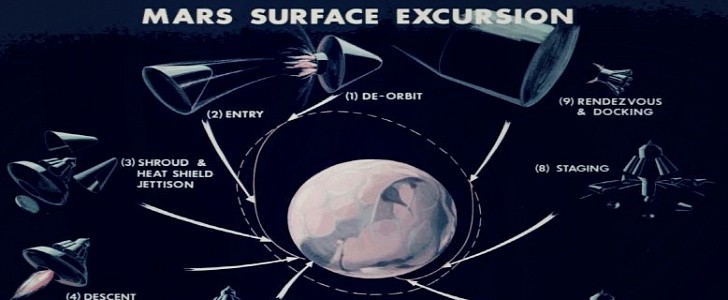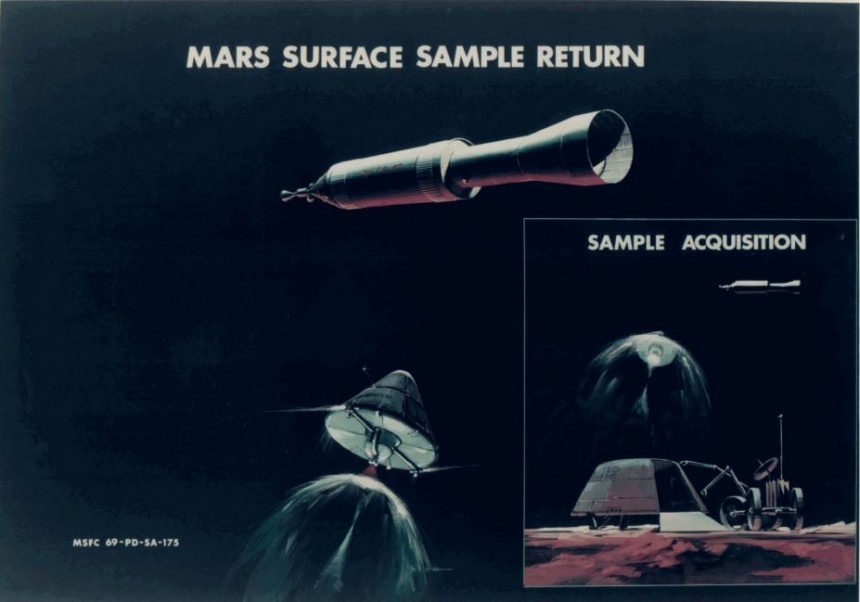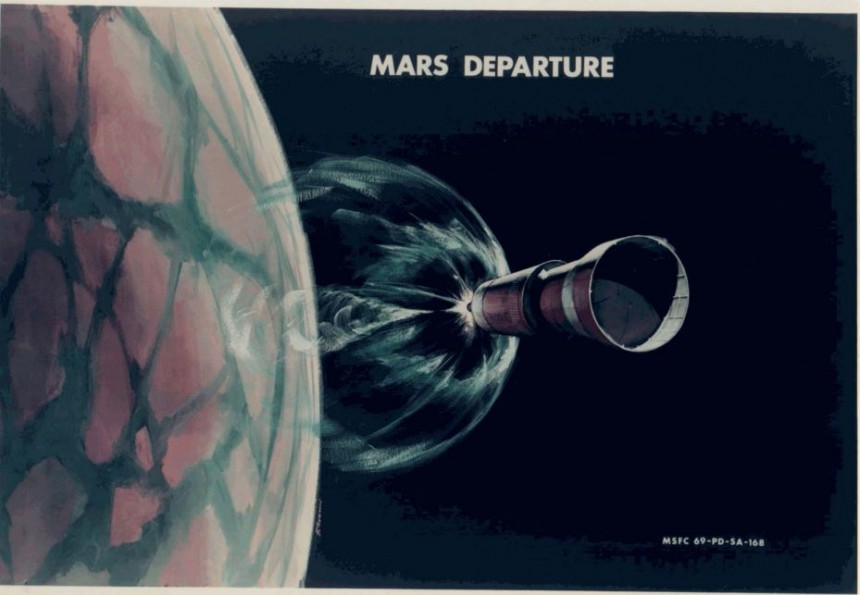By even the most optimistic of time frames, NASA, the ESA, Roscosmos, and the Chinese Space Agency won't be going to Mars until at least the 2030s. For fans of space travel with hydrazine in their veins and infrared telescopes for eyes, that's an annoying amount of time to wait.
But had the pages of history read an even slightly different vernacular, is it possible humanity could have put boots on the ground on the Red Planet in the era of the C3 Corvette and the Nissan 280ZX. At least according to the man himself, The brightest mind behind the American Apollo program, Wernher Von Braun, he had plans after the lunar missions to push existing space-fairing technology of the period to its absolute limit.
In truth, the story of Wernher Von Braun's ambitions for putting humans on Mars dates back to his earliest days in the U.S. after World War II. In the days before NASA had formally taken shape, Von Braun was more or less forced to waste his considerable talents for spaceflight engineering while the Americans, French, and British all took turns oohing and aahing at the German V2 ballistic missile he himself was instrumental in designing.
Once that was all done, Von Braun's days were mostly filled with pitching his ideas to people like Walt Disney. Essentially in the hopes that he'd do the 1950s equivalent of going viral, whatever that was. More so in the hopes that someone of some important circumstance would take interest.
In his considerable free time during this period. He busied himself fleshing out ideas for a space mission far beyond the bounds of anything that'd flown at that point or since. A grand mission beyond the Moon to the surface of the Martian desert.
A full 17 years before Armstrong's small step for man and a giant leap for mankind, Von Braun envisioned a mission so ambitious that it'd be labeled a tall order even by contemporary space mission standards. In his book Das Marsprojekt (The Mars Project), Von Braun explains in exquisite detail over 91 pages his vision of a grand "enormous scientific expedition" to Mars using a fleet of ten spaceships.
Von Braun's reasoning for such a huge convoy of spaceships essentially boiled down to the philosophy that had the original discoverers of the western world not traveled in similar numbers of ships, they'd have never made it back to Scandanavia, Spain, China, or wherever they suspect landed there first this week.
With the formation of NASA and the development of a robust space infrastructure championed by Von Braun's Saturn V rocket, his plans for a Martian mission downsized to a convoy of just two ships. The Americans indeed had a nuclear-powered engine under development in the late 1960s and early 1970s, in the form of the Los Alamos Laboratories NERVA engine.
Had it not been halted by President Richard Nixon, along with nearly all the of the post-Apollo Saturn V booster missions apart from Skylab, there was every reason to suspect a manned American mission to Mars would be at the knife edge of feasibility by the beginning of the 1980s.
All the while, it's not a stretch to believe the Apollo lunar program would have been extended far beyond its expiration date in our timeline in a scenario where NASA's funding wasn't slashed so harshly. In the end, the only element of Von Braun's grand plan that so much as made it off the drawing board, including space stations, satellites, spacecraft, rovers, and booster rockets, was the re-usable space plane that eventually became the Space Shuttle.
It'll never be clear whether spaceflight technology would have actually advanced enough by the 1980s for NASA to sustain a Martian landing. But with a mind as vibrant, intuitive, and at times controversial, we'd say it had a decent shot at success with Von Braun in charge.
In truth, the story of Wernher Von Braun's ambitions for putting humans on Mars dates back to his earliest days in the U.S. after World War II. In the days before NASA had formally taken shape, Von Braun was more or less forced to waste his considerable talents for spaceflight engineering while the Americans, French, and British all took turns oohing and aahing at the German V2 ballistic missile he himself was instrumental in designing.
Once that was all done, Von Braun's days were mostly filled with pitching his ideas to people like Walt Disney. Essentially in the hopes that he'd do the 1950s equivalent of going viral, whatever that was. More so in the hopes that someone of some important circumstance would take interest.
In his considerable free time during this period. He busied himself fleshing out ideas for a space mission far beyond the bounds of anything that'd flown at that point or since. A grand mission beyond the Moon to the surface of the Martian desert.
Von Braun's reasoning for such a huge convoy of spaceships essentially boiled down to the philosophy that had the original discoverers of the western world not traveled in similar numbers of ships, they'd have never made it back to Scandanavia, Spain, China, or wherever they suspect landed there first this week.
With the formation of NASA and the development of a robust space infrastructure championed by Von Braun's Saturn V rocket, his plans for a Martian mission downsized to a convoy of just two ships. The Americans indeed had a nuclear-powered engine under development in the late 1960s and early 1970s, in the form of the Los Alamos Laboratories NERVA engine.
Had it not been halted by President Richard Nixon, along with nearly all the of the post-Apollo Saturn V booster missions apart from Skylab, there was every reason to suspect a manned American mission to Mars would be at the knife edge of feasibility by the beginning of the 1980s.
It'll never be clear whether spaceflight technology would have actually advanced enough by the 1980s for NASA to sustain a Martian landing. But with a mind as vibrant, intuitive, and at times controversial, we'd say it had a decent shot at success with Von Braun in charge.





















